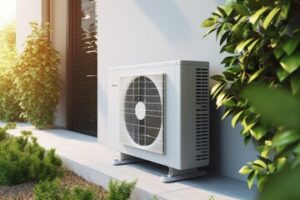Roofing Companies Winston Salem can help homeowners with all aspects of re-roofing. They can handle complicated projects, address unexpected challenges, and complete the job quickly without compromising quality.

Look for a company that offers a workmanship warranty, as well as product warranties. Also, check that they’re licensed and insured for liability.
When choosing a roofing company, it’s important to look at the company’s experience. A contractor with a lot of experience has a deep understanding of the intricacies involved in different roofing projects and can tackle them efficiently. In addition, they have a solid grasp of industry best practices and stay current with the latest technologies.
Moreover, experienced contractors have strong problem-solving skills, which enable them to deal with unexpected challenges that may arise during the project. This allows them to minimize disruptions and keep the cost of the project within budget. Besides, experienced contractors are more likely to provide a warranty on their work.
In addition, a good roofing contractor should be licensed, and they should provide proof of their insurance to the homeowner. They should also be willing to give references and answer any questions the homeowner has. They should also disclose whether they use subcontractors or perform the work themselves. Additionally, they should be able to show you their roofing certificate and manufacturer’s warranties for the materials that will be installed at your home.
A roofing contractor should be able to explain the different roof types and their advantages and disadvantages. They should also be able to identify any underlying issues with your roof and recommend solutions. This will ensure that you get a high-quality roof that lasts for many years.
An experienced roofing company should have a well-trained crew that follows safety protocols and uses proper equipment. This will help prevent accidents that can harm both the crew members and the homeowner. They should also follow the hierarchy of controls, which is a series of actions that should be taken to control exposures.
A roofing company that is certified by a manufacturer like GAF will be able to offer their strongest warranties. This certification requires contractors to pass a rigorous test and adhere to strict building codes. Moreover, they must have adequate liability insurance coverage. Moreover, the roofing company should have an excellent track record and customer service. This is the only way that they can build a loyal client base.
Reputation
Reputation is an important factor to consider when choosing a roofing company. A roofing contractor with a good reputation will have a history of satisfied clients and a solid track record of quality workmanship and customer service. They will also be punctual, and prioritize client satisfaction by providing detailed estimates and addressing any concerns promptly.
The best way to evaluate a roofing company’s reputation is to read online reviews and testimonials. Checking the company’s website for a physical office address is another way to verify its credentials. You can also visit local review platforms and directories to see how past customers have rated the roofing company’s work. Look for positive and negative feedback, as well as any recurring themes.
Choosing a roofing contractor with a strong local presence will ensure that they are familiar with your area’s weather conditions and any relevant regulations. Local roofers are more likely to be active in their community, which shows that they are invested in the long-term success of their business. They will also be more willing to stand behind their work, as they will have a personal stake in your satisfaction.
When selecting a roofing contractor, it’s also important to ask about their insurance coverage and liability policies. This will ensure that you are covered in case of an accident or damage to your property. A reputable roofing company will have workers’ compensation, general liability insurance, and equipment insurance to protect their employees and clients.
A reputable roofing company will have a professional website that features an online portfolio of previous projects and photos. They will also be able to provide references and testimonials from previous clients. If you’re unsure about their ability to meet your expectations, request for references and contact them directly. This will give you an opportunity to discuss your specific requirements and assess their level of professionalism.
Warranty
Roofing warranties provide important protection for homeowners against unforeseen costs, providing peace of mind and financial security. They can cover roof replacement, installation errors, and more. It is important to understand the specifics of each warranty in order to make a wise decision. The type of roof you choose, the location of your home, and other factors will affect the duration and coverage of your warranty.
Generally, there are two types of roofing warranties: manufacturer warranties and workmanship warranties. Manufacturer warranties protect against defects in roofing materials, while workmanship warranties cover the quality of the contractor’s work. Choosing a company that offers both of these warranties can help you safeguard your investment and ensure that the quality of the products and services you receive are top-notch.
Many roofing companies offer a standard manufacturer warranty with their services, while some even offer a lifetime guarantee on shingles and other roofing materials. Those who do not offer these warranties are often not reputable contractors. Those who do should have certifications from leading shingle manufacturers, proving their ability to meet industry standards and produce high-quality materials that last.
In addition to the manufacturer’s warranty, a quality roofing company should also offer a workmanship warranty. This covers problems that are the result of faulty workmanship and installation, such as improper flashing or venting. It is common for some roofing projects to have issues, especially in areas with extreme weather conditions. However, a good roofing contractor should be able to correct these problems quickly and efficiently.
A good roofing contractor should provide you with the specifics of their warranties, as well as the terms and conditions for registering them. You should always register your warranty promptly and accurately to ensure that it is active and provides the necessary protection for your new roof.
The duration of a roof warranty will vary based on the manufacturing company, the type of roofing material, and other factors. Some manufacturers offer ‘lifetime’ warranties on their roofing materials, but these typically only apply to areas with moderate climates. In the case of a warranty for a full roof replacement, it is important to know whether it is pro-rated or non-pro-rated. If it is pro-rated, the cost of the new roof will be deducted from your original purchase price if you need to replace your roof before the warranty period expires.
Group buying
Roofing companies offer a variety of services, from roof inspections and repairs to repairing drywall damage. They also help homeowners choose the best materials for their homes. They may also provide a warranty on their work, which can give homeowners peace of mind. Some roofing companies may also be members of group purchasing organizations, which can help them cut costs by buying materials in bulk. This can save them money and time, as they don’t have to shop around for the best prices.
A reputable roofing company can generate referrals from satisfied customers and build brand awareness through social media, email marketing, and traditional marketing. Traditional marketing includes offline advertising, such as flyers and radio ads. It can help roofing businesses reach non-internet users and potential customers who don’t trust digital advertisements.
An effective roofing company can also develop a strong customer service reputation by providing an excellent customer experience. This can be achieved by ensuring that communication with customers is consistent and efficient. Moreover, it is essential to implement tools that allow customers to track the progress of their roofing job. These tools can help reduce no-shows and alleviate customers’ apprehension about letting a stranger enter their home.
Moreover, roofing companies can establish a professional image by highlighting their technical expertise and industry experience in marketing materials. For example, they can use blogs to share informative content and demonstrate their knowledge of roofing products and techniques. They can also emphasize their commitment to industry standards through memberships in professional associations and positive testimonials.
Moreover, roofing companies can increase their visibility by creating partnerships with complementary businesses and attending local trade shows. This can lead to referrals and new business opportunities. For example, a roofing company can collaborate with gutter installers, real estate agents, solar panel companies, and insurance providers to create discounted service bundles. It can also benefit from attending trade shows by establishing relationships with potential customers and generating leads. They can also network with other roofers to learn about the latest trends in the roofing industry. Then, they can use these insights to improve their business and compete more effectively in the market.



